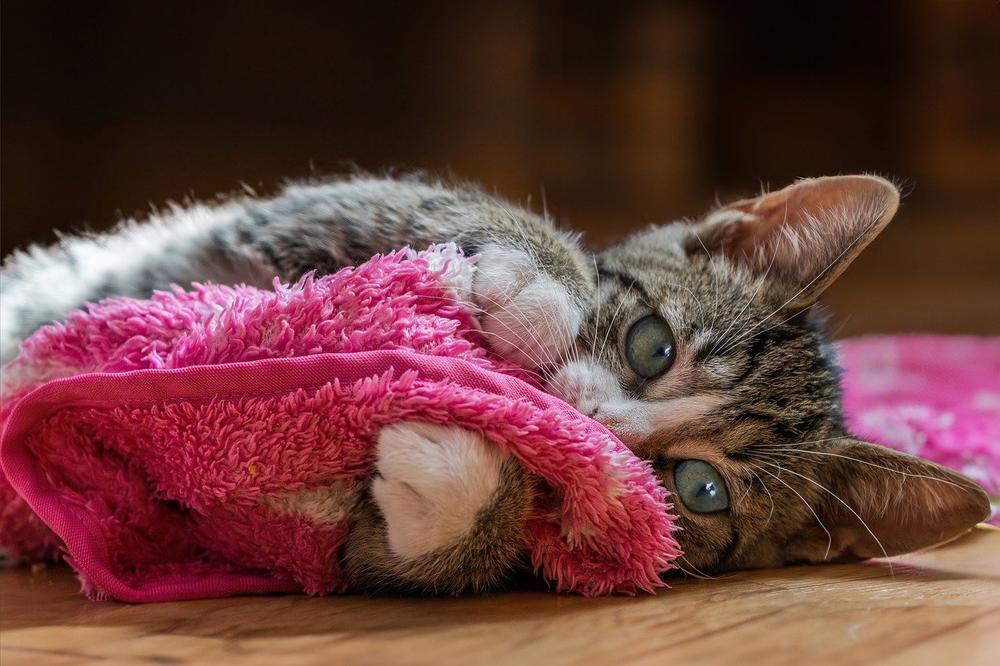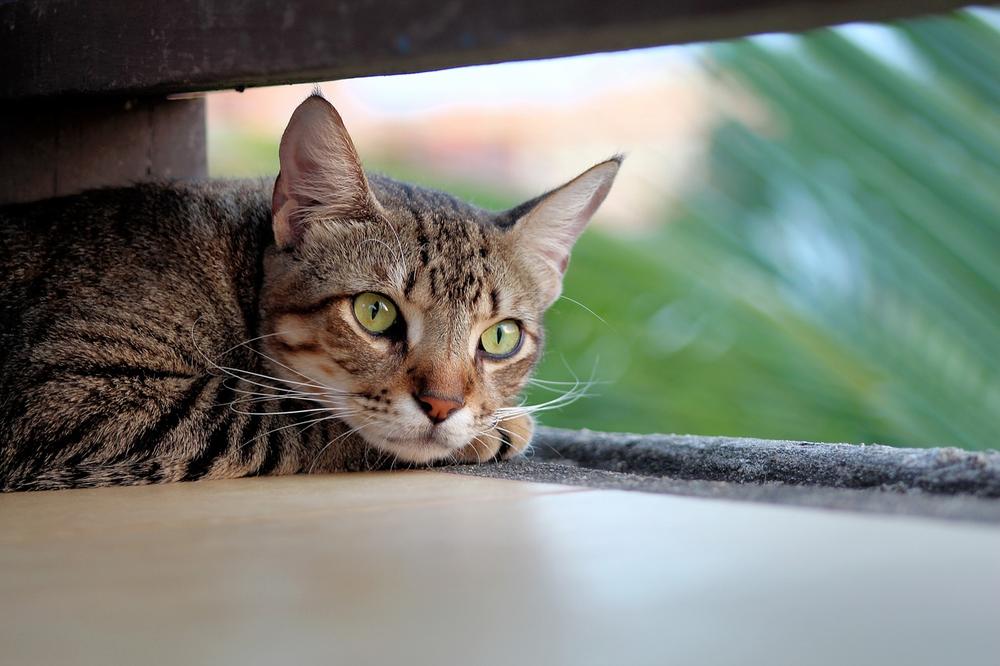When to Put Your Cat Down? This Is What You Should Consider

Do you feel that knot in your chest, pulling tighter with every passing day?
The weight of responsibility, emotional turmoil, and moral dilemma bearing down on you.
I understand.
It's tough.
But hold on, because help is on the way. 😊
Keep reading.
How Do I Know When It’s Time to Euthanize My Cat?
Losing a cat you love is tough.

Deciding to put them to sleep is even tougher.
Here's what you need to look for when deciding if it's time to say goodbye:
- Is your cat behaving and looking really different? Are they getting worse quickly?
- Are they not eating or drinking as much? This could be a sign of bigger problems.
- If they're in pain and medicine isn't helping, it matters.
- Can your cat still move around like before? If they're struggling, they might not be doing well.
- Watch their bathroom habits. Trouble peeing or pooping means something serious might be going on.
- Pay attention to how they groom themselves. If they stop, it could mean they feel sick.
- Sleep patterns can tell you a lot about how your cat feels.
- Think about how they act with you. If they don't want to be touched and hide more often, they might be unhappy or uncomfortable.
- If your cat makes a lot of noise and coughs or wheezes, they might have breathing problems that affect them every day.
When it comes to putting your cat to sleep, always think about what's best for them.
Talk to your vet for help and support during this hard time. 😿
Main points I'll expand upon further down this article:
- Assess the cat's quality of life using a quality-of-life chart.
- Signs like refusal to eat or decreased mobility may indicate a poor quality of life.
- Consider factors and alternatives before deciding on euthanasia.
- Terminal illnesses may require euthanasia if there are no treatment options.
- The veterinary doctor administers a sedative and anesthetic overdose for euthanasia.
- Poor hygiene can indicate health problems, potentially prompting euthanasia.
- Consult with your vet to determine the best timing for euthanasia.
- Different locations, such as home or clinic, have advantages and disadvantages for euthanasia.
- Decide how to handle your cat's remains, whether through burial or cremation.
- Seek support and honor the cat's memory to cope with euthanasia.
Quality of Life Assessment Tools: From Checklists to Quizzes
Assessing your cat's quality of life is essential for you as a cat owner.
It helps determine whether it's time to consider euthanizing your cat. To achieve this, there are quality-of-life assessment tools available that evaluate various aspects of your cat's well-being.
These tools include checklists or quizzes focusing on their physical disabilities, proper care, mobility, mental state, and in essence happiness. By using these assessments, you can better understand your cat's current state and make informed decisions about their well-being.
And now, let's delve into the emotional preparation techniques and the role of a veterinary doctor in the euthanasia process!
The Euthanasia Process: What to Expect
When it's time to euthanize your beloved cat, there are a few important things you should know.
First, it's crucial that you emotionally prepare yourself.
You can do some relaxation exercises or write down cherished memories of your furry friend to help ease the pain.
Sometimes, when there are no effective treatments for terminal illnesses like aggressive cancer, euthanasia becomes necessary.
During the procedure, a vet administers a sedative followed by an anesthetic overdose to peacefully stop your cat's heart.
Here's where you have a choice—you can decide whether this will happen at a clinic or in the comfort of your own home.
If your cat has poor hygiene, it could be a sign of health problems that may mean euthanasia should be considered.
But don't make this decision alone—make sure to consult with your vet to determine the best timing.

Before going ahead with euthanasia, PLEASE bear in mind that rehoming or taking a healthy cat to a shelter are alternatives worth considering.
Now let's talk about where the procedure will take place. Both home and clinic procedures have their pros and cons.
The actual euthanasia process is quick and painless.
Your cat will appear to fall asleep, leading to a gentle halt of brain and bodily functions.
Afterward, you'll need to think about what you want to do with your cat's remains.
You can choose to bury them at home, in a pet cemetery, or opt for cremation.
And hey, don't forget—if you ever need emotional support or want to discuss future decisions about euthanasia, telemedicine services are there to help you out. 😔
But how exactly do you determine when it's the appropriate time to consider euthanasia for your beloved cat?
Let's dive into a comprehensive checklist that focuses on enhancing your elderly cat's comfort during their final days...
The Elderly Cat: Nearing the End of Life
When your cat gets old, ensure they're comfortable.
Here's what you can do:
- Give them a soft bed: Old cats might have achy joints and need something cushy to rest on.
- Keep them warm: Set up heated spots or blankets so your cat stays nice and cozy.
- Make food and water easy to reach: Elderly cats might struggle with high bowls, so keep everything at a convenient height.
- Keep an eye on their water intake: Older cats can get dehydrated easily, so make sure they drink enough.
- Be aware of challenges: Cats can develop serious illnesses or have difficulty walking as they age.
- Think about euthanasia if necessary: If your cat is in chronic pain that affects their quality of life, it might be the kindest choice.
- Look for signs: If your cat stops grooming themselves, it could mean the end is near.
Every cat is different, but indoor cats usually live 10 to 15 years.
Take good care of your senior cat and give them love and comfort in their final days.
Long story short: There's more information you need to know further down the blog post. I'll share my insights on coping after putting your cat down, so keep reading to find out how to navigate this difficult time.
Delving Deeper: Behavioral Euthanasia
Considering professional help from an animal behaviorist or certified trainer who specializes in feline behavior modification is worth your while before even thinking about behavioral euthanasia. Behavioral euthanasia means putting down a pet based on their behavior, not because of physical health problems.
In cases where severe aggression persists despite efforts to correct it, this might affect end-of-life care choices for your cat.
However, remember that it's unethical to euthanize a healthy cat solely because of behavioral issues.
Chronic litter box problems like peeing outside the box or excessive use can indicate underlying issues that reduce a cat's quality of life and create extra work for you.
If all attempts to improve these behaviors fail, considering euthanasia may be an option to consider for your cat's well-being.
And if you're wondering about any strange black spots on your cat's nose, I've got just the article for you.
Take a moment to discover the possible causes and implications in my blog post Why Is There a Black Spot on My Cats Nose. It's a helpful guide that delves deeper into this topic, providing you with valuable insights.
Exploring the reasons behind such concerns can bring peace of mind when caring for your beloved pet.
Coping After Putting Your Cat Down
Self-care activities for coping with the loss of your cat
Losing your cat is tough, I know.
Making the decision to put them down is incredibly difficult.
It's okay to feel overwhelmed right now.
One way to find solace is by taking care of yourself.
Go for walks in nature, breathe in the fresh air, and let yourself process your emotions.
Mindfulness meditation can also help calm your mind and allow you to express your feelings.
Seeking support for dealing with guilt and grief
Dealing with euthanasia is important as a responsible pet owner, but it's not easy.
You might feel regret about the timing of the procedure, and that's completely normal.

Recognize your guilt and grief and reach out for support when needed.
Talk to friends, family, or join support groups where you can connect with others who have been through similar experiences.
Sharing your thoughts and emotions can bring you comfort and help you navigate this difficult time.
Honoring your cat's memory and finding comfort
Finding comfort and honoring your beloved cat's memory can ease your pain as you move forward. Consider creating a memorial for them.
Plant flowers or trees in their honor or write letters or stories about them.
Allow yourself to feel and accept your sorrow before taking steps towards healing.
If you're not ready for another cat yet, reach out to cat owners, animal care organizations, or veterinarians who can provide assistance.
And please, keep communication open with your vet about next steps like cremation, so you have peace of mind knowing your cat will be taken care of.
In the end, grieving is a process. Know that you provided a loving home and compassionate care for your cat, which can help you heal over time.
And that wraps up today's article.
Before you leave, can I ask you something? Did my blog post help you out? If it did, I would be extremely grateful if you could share it with your friends and family. Just click on any of the social media sharing icons to instantly spread the word. Thank you very much!
Talk soon,
-Sarah Davis